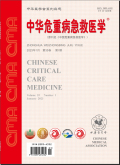疏风宣肺和解表清里方药对流感病毒性肺炎小鼠Toll样受体通路影响的研究
A research on the influence of two herbal concoctions on Toll-like receptor signal pathways of influenza virus induced pneumonia in mice
摘要目的 观察疏风宣肺、解表清里方对流感病毒亚甲型肺适应株FM1感染小鼠肺组织细胞Toll样受体(TLR)信号转导通路的影响.方法 制备小鼠甲型流感病毒性肺炎模型,按随机数字表法分为对照组(C),模型组(M),达菲组(D),疏风宣肺方高、中、低剂量组(SH、SM、SL),解表清里方高、中、低剂量组(JH、JM、JL),每组12只.制模后2h,对照组、模型组均灌胃蒸馏水,达菲组灌胃达菲2.5 g·mL-1·-1,不同剂量方药组分别灌胃疏风宣肺方颗粒剂3.76、1.88、0.94 g·kg-1·d-1和解表清里方颗粒剂4.37、2.18、1.09 g·kg-1·d-1,各组均0.2 mL/d,连用4d.提取肺组织总RNA,采用基因组芯片筛选出与TLR通路相关的差异表达基因,并用实时荧光定量逆转录-聚合酶链反应(RT-PCR)对部分基因进行验证.结果 与对照组比较,模型组差异表达基因TLR7、MYD88、CCL5、IFNB1、IL6、IL12a、NFKBIA、IKBKB明显上调.与模型组比较,疏风宣肺方中、低剂量组和解表清里方中剂量组差异表达基因TLR3、TLR7、MYD88、CCL5、IFNB1、IL6、IL12a、NFKBIA、IKBKB明显下调[疏风宣肺方中剂量组log2(SM组/M组信号强度)分别为-1.24、-2.02、-1.36、-1.95、-0.63、-1.33、-3.50、-1.33、-1.33,疏风宣肺方低剂量组log2(SL组/M组信号强度)分别为-1.07、-2.43、-2.63、-2.30、-5.09、-3.19、-3.53、-1.95、-1.95;解表清里方中剂量组log2(JM组/M组信号强度)分别为-1.78、-0.55、-1.35、-1.47、-1.65、-2.03、-3.02、-1.57、-1.57],提示疏风宣肺方治疗效果比解表清里方好.RT-PCR结果显示,与模型组比较,疏风宣肺方高、中、低剂量组和解表清里方高、中剂量组及达菲组对TLR7、核转录因子-KB(NF-κB)、髓样分化抗原88(MyD88)的mRNA表达均有抑制作用,其中疏风宣肺方中、低剂量组(TLR7 mRNA:3.6±0.3、3.5±1.2比7.4±1.6; NF-κBmRNA:1.1±0.2、1.0±0.2比2.2±0.4;MyD88 mRNA:1.4±0.4、1.0±0.3比3.4±0.9,均P<0.01)和解表清里方中剂量组(TLR7 mRNA:4.9±0.3比7.4± 1.6; NF-κB mRNA:1.3 ±0.7比2.2±0.4; MyD88mRNA:1.6±0.8比3.4±0.9,P<0.05或P<0.01)作用较为明显.结论 中、低剂量疏风宣肺方和中剂量解表清里方通过调控MyD88依赖的TLR信号转导通路下调NF-κB表达,从而治疗流感;疏风宣肺方药疗效较好.
更多相关知识
abstractsObjective To investigate the effect of Shufeng Xuanfei and Jiebiao Qingli concoctions on Toll-like receptor (TLR) signal pathway of pneumonia infected with influenza virus in mice.Methods The pneumonia model was reproduced by nasal dropping of influenza virus A in mice.The mice were randomly divided into nine groups:normal group (C),model group (M),tamiflu group (D),Shufeng Xuanfei low-dose (SL),medium-dose (SM) and high-dose (SH) groups,Jiebiao Qingli low-dose (JL),medium-dose (JM) and high-dose (JH) groups,each n =12.Two hours after model-reproduction,the mice in C group and M group received distilled water by gavage.The mice in D group received 2.5 g· mL-1· d-1 oseltamivirphosphate.Shufeng Xuanfei formula in doses of 3.76,1.88,0.94 g· kg1 · d-1 were respectively administered to SH,SM and SL groups by gavage,Jiebiao Qingli formula in doses of 4.37,2.18,1.09 g ·kg-1 ·d-1 was given to JH,JM and JL groups by gavage,respectively.Each group was in equal dose of 0.2 mL daily over a 4-day period.Total RNA was extracted in each group.Then gene chips were used to screen these RNA samples.Some genes that were involved in TLR signal pathways were selected.These candidate genes were verified by real-time reverse transcription-polymerase chain reaction (RT-PCR).Results TLR7,MYD88,CCLS,IFNB1,IL6,IL12a,NFKBIA and IKBKB were up-regulated in model group compared with control group.Compared with model group,down-regulated genes in medium-dose,low-dose Shufeng Xuanfei formula and medium-dose Jiebiao Qingli formula included TLR3,TLR7,MYD88,CCL5,IFNB1,IL6,IL12a,NFKBIA and IKBKB (log2 signal intensity of SM,/M in medium-dose Shufeng Xuanfei formula group were-1.24,-2.02,-1.36,-1.95,-0.63,-1.33,-3.50,-1.33,-1.33,log2 signal intensity of SI/M in low-dose Shufeng Xuanfei group were-1.07,-2.43,-2.63,-2.30,-5.09,-3.19,-3.53,-1.95,-1.95,log2 signal intensity of JM/M in medium-dose Jiebiao Qingli formula group were -1.78,-0.55,-1.35,-1.47,-1.65,-2.03,-3.02,-1.57,-1.57,respectively).The results suggested that the effect of Shufeng Xuanfei formula was better than that of Jiebiao Qingli formula.By RT-PCR,compared with model group,low-dose,medium-dose and high-dose groups of Shufeng Xuanfei formula,medium-dose and high-dose groups of Jiebiao Qingli formula,and tamiflu group,significant decrease in TLR7,nuclear factor-κB (NF-κB),myeloid differential protein-88 (MyD88) mRNA expression were found.Medium-dose and low-dose Shufeng Xuanfei formula group (TLR7 mRNA:3.6 ±0.3,3.5 ± 1.2 vs.7.4 ± 1.6,NF-κB mRNA:1.1 ±0.2,1.0 ±0.2 vs.2.2 ±0.4; MyD88mRNA:1.4 ± 0.4,1.0 ± 0.3 vs.3.4 ± 0.9,all P<0.01) and medium-dose Jiebiao Qingli formula group (TLR7 mRNA:4.9 ± 0.3 vs.7.4 ± 1.6,NF-κB aRNA:1.3 ± 0.7 vs.2.2 ± 0.4,MyD88 mRNA:1.6 ± 0.8 vs.3.4 ± 0.9,P<0.05 or P< 0.01) were shown statistically significant decreases compared with the model group.Conclusions Medium-dose and low-dose Shufeng Xuanfei formula and medium-dose Jiebiao Qingli formula can inhibit the inflammatory reaction induced by influenza virus by down-regulating the NF-κB through TLR signal pathways dependent on MyD88.The regulation of Shufeng Xuanfci formula in TLR signal pathways was superior to that of Jiebiao Qingh formula.
More相关知识
- 浏览419
- 被引9
- 下载64


相似文献
- 中文期刊
- 外文期刊
- 学位论文
- 会议论文



 换一批
换一批 换一批
换一批



